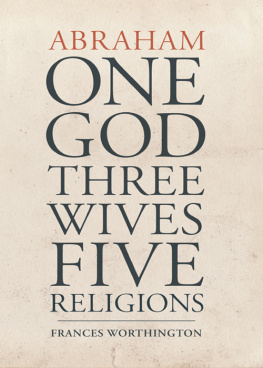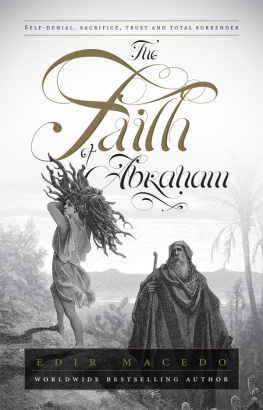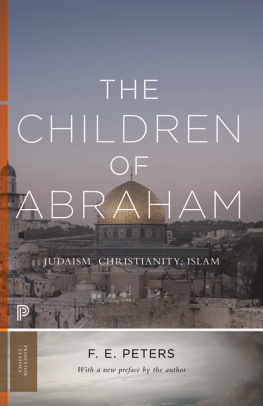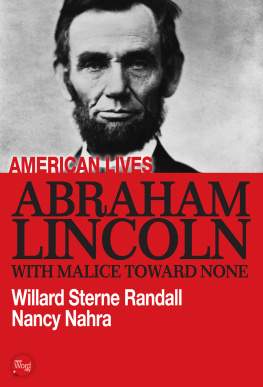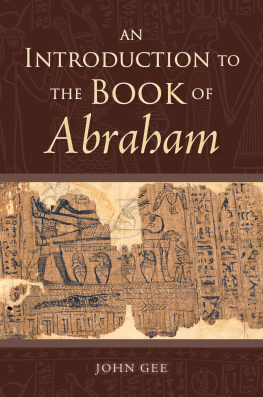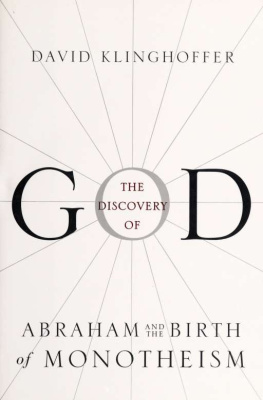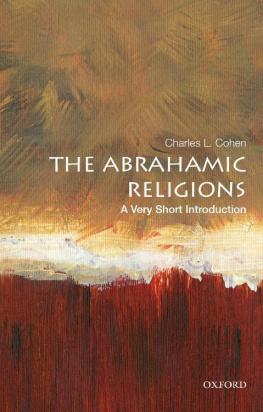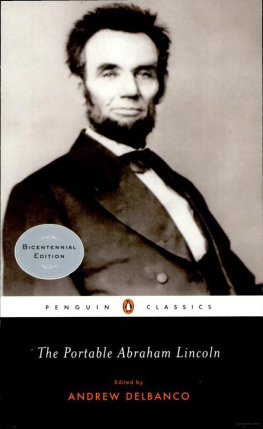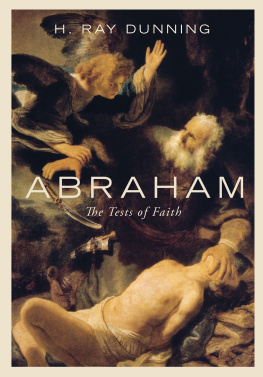ABRAHAM
ABRAHAM
ONE
GOD
THREE
WIVES
FIVE
RELIGIONS

FRANCES WORTHINGTON

Bah Publishing
415 Linden Avenue, Wilmette, Illinois 60091-2844
Copyright 2011 by the National Spiritual Assembly of
the Bahs of the United States
All rights reserved. Published 2011
Printed in the United States of America on acid-free paper
14 13 12 11 4 3 2 1
Library of Congress Cataloging-in-Publication Data
Worthington, Frances.
Abraham : one God, three wives, five religions / Frances Worthington.
p. cm.
Includes bibliographical references.
ISBN 978-1-931847-89-6 (acid-free paper)
ISBN 978-1-618510-08-2 (ebook)
1. Abraham (Biblical patriarch) 2. Abrahamic religions. I. Title.
BS580.A3W63 2011
222.11092dc23
2011023464
Cover design by Andrew Johnson
Book design by Patrick Falso
For John
ACKNOWLEDGMENTS
A question about Muammad and Abraham asked by Christopher Henderson, then age fourteen, was the hook that tugged me into the story of Abraham. Shahin Borhanian and Professor Richard Thomas were the first to suggest that it was time to write a book. My good friend Jan Ray cheered the project on with unfailing enthusiasm. The patient attention and probing questions of a group of students who signed up for my course on Abraham in the fall of 2008 through the Osher Lifelong Learning Institute at Furman University influenced the organization of the chapters, though they might not have realized it at the time. Dr. Michael Gauderer was kind enough to translate an article from Der Spiegel.
An angelic host of collaborators from several different religions provided invaluable assistance by reading various incarnations of the manuscript and courageously providing sharp and very helpful feedback. They include Carol Ann Heymann, Samir Jaber, Dr. Fred Leffert, Tariq Rashid, Liz Rose, Shaun Stone, Al Tompkins, and Shahin Vafai, plus fellow members of the Womens Interfaith Book Club: Dorcus Abercrombie, Bonita Bost, JoAnn Borovicka, Carolyn Dicer, Rev. Dr. Michelle McClendon, Rev. Julie Schaff, Mareon Stall, and Louise Tajuddin. Christopher Martin, working from his lair deep in the heart of Texas, introduced me to the paperless process of computer-assisted editing and patiently polished the chapters one by one.
L IST OF I LLUSTRATIONS AND M APS
. 2011 map with current boundaries plus ancient cities of Ur and Harran
. Mesopotamia and the Land of Canaan c.2,000 BC
. Simplified genealogy of the three wives/concubines of Abraham
. Simplified genealogy of Moses
. Simplified genealogy of Jesus
. Simplified genealogy of Muammad
. Simplified genealogy of the Bb
. Simplified genealogy of Bahullh
. All of the genealogies plus a rough timeline



PROLOGUE
Anyone foolhardy enough to contemplate adding another volume to the already towering stack of books about Abraham ought to have a rationale, so here is mine: Although the story of Abraham and the three wives / concubines who birthed five religions is a spiritual soap opera thats been running for about four thousand years, very little has been written about it from the perspective of someone who is a member of the newest of the Abrahamic religionsthe Bah Faith. This book doesnt represent the opinion of every Bah, and its not an official statement. Its just what I see when I squint my eyes and gaze into the past.
In writing from a Bah viewpoint, I build on three basic assumptions:
- Abraham was a Messenger of God Who lived about four thousand years ago and established the concept of monotheism.
- Each of the five religions alluded to in the title of the bookJudaism, Christianity, Islam, the Bb Faith, and the Bah Faithis an important and legitimate chapter in the overarching book of divine knowledge.
- The Founders of these religions (Moses, Jesus, Muammad, the Bb, and Bahullh) are descendants of Abraham via the three wives / concubines that are mentioned in the Book of Genesis: Sarah, Hagar, and Keturah.
The most important sources of information for this exploration of Abraham have been the sacred texts of the Abrahamic religions:
- The Tanakh of Judaism, which is also referred to as the Old Testament
- The New Testament of Christianity
- The Qurn of Islam
- The writings of the Bb in the Bb Faith
- The sacred and authoritative writings of the Bah Faith
Each religion has something special to say that enriches our understanding of who Abraham was and what His effect on history has been. In addition, Ive delved into stories about Abraham contained in the oldest traditions of Judaism, Christianity, and Islam, and have had a wonderful time perusing books of history, geography, archaeology, and even poetry at various public and university libraries.
The real miracle in this effort, however, has been the World Wide Web. Prior to this incredible era of computer-aided search, it would have been well-nigh impossible to unearth the disparate nuggets of information needed to construct this narrative.
Much of the excitement of researching the Abrahamic soap opera has come from discovering unexpected connections between the widely-spaced episodes. With each twist and turn of the plot, Ive been forced to reevaluate prior assumptions and reassess evidence. What seemed true at the beginning was sometimes proven false by something discovered much later. In probing the various levels of meaning in scriptural verses, Ive been guided by the belief that science and religion are God-given partners. Each is dedicated to a certain kind of truth, each can inform the other, and both are essential to a balanced understanding of our spiritually physical (or physically spiritual) universe.
On the few occasions when it has been necessary to reconcile conflicting information from different religions, Ive adhered to two basic rules:
- When scripture and tradition disagree, scripture wins.
- When old and new scripture disagree, the scripture from the most recent Revelation takes precedence because it is the newest Word of God.
This book is not a work of fiction because Ive remained within the bounds of what is indicated by a combination of scriptural text, historical data, and archaeological evidence. Nevertheless, for the sake of readability and just plain fun, the storyline is delicately dusted with the tasty spices of probably and possibly.
As I write these words, my ears are buzzing with the strident summer song cicadas use to attract a mate. My laptop and I are crouched on the sofa of a small room near the soft beach that clothes the outer edge of Kiawah Island, South Carolina. The room is on the second floor, but the greater part of the view to the horizon is blocked by a tangle of live oaks and scrambling muscadine vines. All I can see of the sky are a few tantalizing shimmers of blue, the perfect metaphor for my attempts to peer beyond the thicket of prior assumptions and take a fresh look at the Father of Monotheism.

